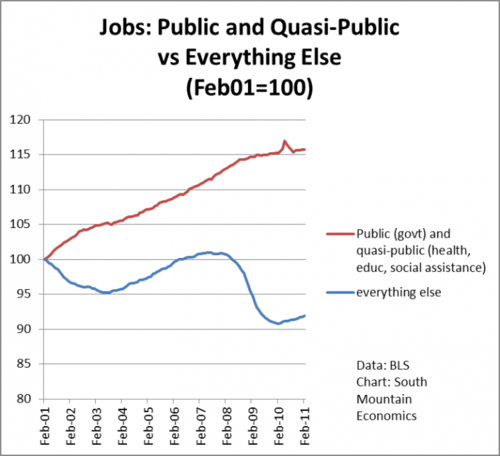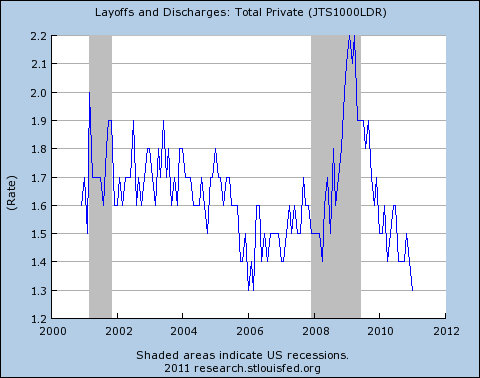Tydzień w gospodarce
Kategoria: Trendy gospodarcze
Many commentators tend to focus on the usual subjects — weekless jobless claims, headline unemployment rate, monthly changes in nonfarm payrolls — when describing the state of the labor market.
But as we’ve seen in other cases, the numbers that don’t attract as much attention from the media and the financial markets, including those that result from slicing and dicing the subcomponents of the aforementioned series, often tell a different story than the highlighted data.
In fact, here are excerpts from three reports that seem to refute the notion that a jobs recovery is imminent. In fact, they suggest to me, at least, that the structural weakness in the labor market predated and will likely last far longer than the crisis and subsequent recession:
„A Decade of Labor Market Pain” (Mandel on Innovation and Growth)
In February 2001, nonfarm payrolls hit their business cycle peak of 132.5 million. Ten years later, the latest data pegs February 2011 payrolls at 130.5 million, a 1.5% decline. To put this in perspective, the ten-year period of the Great Depression, 1929-39 saw a 2.3% decline in nonfarm employment, roughly the same magnitude.
But even that 1.5% understates the extent of the pain for most of the workforce. I divide the economy into two parts. On the one side are the combined public and quasi-public sectors, and on the other side is the rest of the economy. Public, of course, refers to government employees. ‘Quasi-public’, a term I just invented, includes the nominal private-sector education, healthcare, and social assistance industries. I call them ’quasi-public’ because these industries depend very heavily on government funding. For example, social assistance includes ‘child and youth services’ and ‘services for the elderly and disabled’, which are often provided under government contract.
The chart below shows employment growth in the public/quasi-public sector, compared to employment growth in the rest of the economy, with February 2001 set to 100. We can see that public/quasi-public employment rose steadily over the past ten years, and is now up 16%. By comparison, the rest of the private sector is down 8% in jobs over the past 10 years.
„Hidden Workforce Challenges Domestic Economic Recovery” (Washington Post)
Overshadowing the nation’s economic recovery is not only the number of Americans who have lost their jobs, but also those who have stopped looking for new ones.
These workers are not counted in the Labor Department’s monthly unemployment rate, yet they say they are willing to work. Since the recession began, their numbers have grown by 30 percent, to more than 6.4 million, amounting to a hidden labor force that could stymie the turnaround.
Adding these workers to February’s jobless rate pushes it up to 10.5 percent, well above the more commonly cited 8.9 percent rate.An even broader measure of unemployment, which includes people forced to work part time, stands at nearly 16 percent.
Economists say the longer these workers stay out of the job market, the harder it will be for them to find employment, creating a vicious circle that can spiral for months or longer. Meanwhile, their delayed entry into the job market means smaller paychecks in the future. And if these ranks remain high, economists worry that it will signal a much deeper and more troubling problem for the country: Workers’ skills don’t match the jobs available.
“It can be a self-reinforcing problem, where it just gets worse over time,” said Burt Barnow, an economist and professor at George Washington University.
‚No JOLTS to Complacency” (The Conscience of a Liberal)
From the JOLTS (job offerings and labor turnover) data:
Although unemployment remains very high, at this point that’s mainly due to lack of hiring; layoffs are quite low. This means that people who still have decent jobs aren’t feeling much at risk of losing them. So any urgency would have to come from concern about those who don’t have jobs — those who lost them in the slump, and of course young people trying to get started on their working lives.
And those people — at least one in six workers, judging by U6 — don’t seem to have much political or psychological visibility. In effect, they’re being written off.


